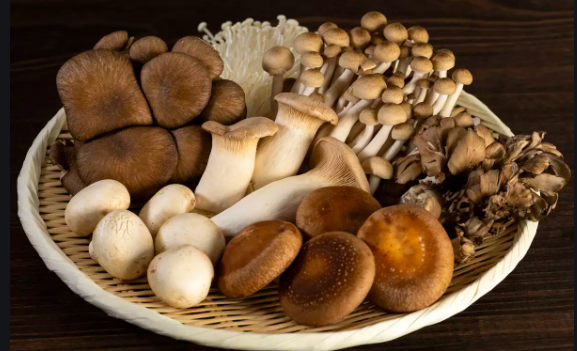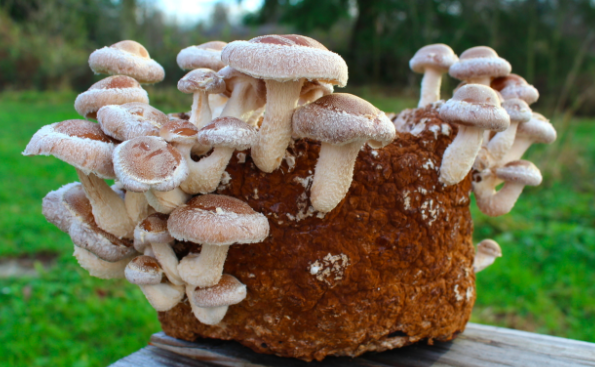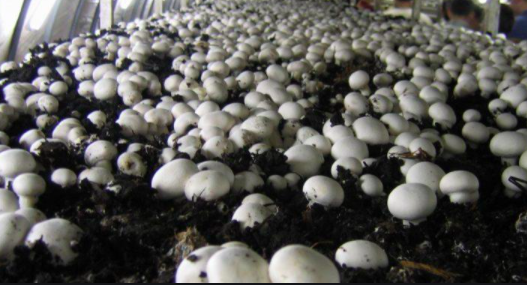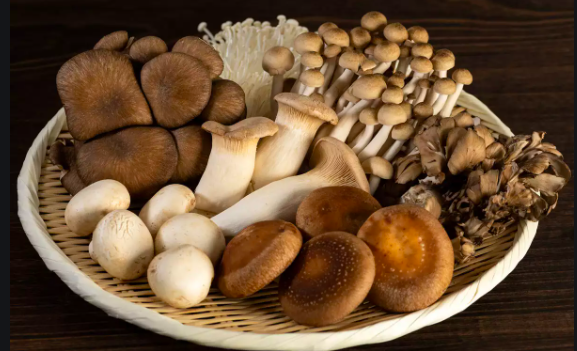While mushroom cultivation may seem like an extremely technical and complicated business to undertake, it is actually much simpler than perceived to be. Not only is it easy, but it is also an extremely quick business as well, i.e., you can start realizing the profits in a matter of weeks as long as you have a prospective client base and logistics figured out.

Let’s jump into the steps towards starting a mushroom business. Note that these steps work just fine for any sort of edible mushroom, however, the ingredients or the inputs may vary from variety to variety. An indicative list of these inputs has been included ahead.
Step 1: Spawn and Substrate
Mushroom spawn is basically anything that promotes mushroom growth as it is infused with mycelium. Mycelium is similar in the mushroom cultivation world to seeds in the plant world. The spawn is essentially the carrier of this seed-like mycelium and it must be put in an environment that is conducive to the sprouting of mushrooms. In the plant world, a seed is sown into the soil, while in the world of mushroom cultivation, the mycelium-infused spawn is then put into the substrate i.e. the home for the seed-like spawn. This could be a mushroom bed, wooden log, so on and so forth.
Let’s talk a little bit about spawn. Anything ranging from sterilized sawdust to ultimately inoculate wooden logs, cardboard, pasteurized straw, or even mushroom beds. Sawdust has many advantages if used as spawn – firstly, it is extremely affordable. You can buy big quantities for pennies and secondly since the particles of sawdust are extremely small, they give the mycelium ample room to expand and sprout, translating into more produce!
However, what is used as spawn would vary significantly as per the variety of mushrooms that one wishes to cultivate. Sometimes, grains like rye and millet are also used in order to grow mushrooms. While these are relatively expensive, they serve as a more nutritious spawn for the mushroom mycelium to feed on, translating into a higher quality product. Other common spawns in mushroom cultivation include plug, woodchip, straw, liquid spawn, etc.
Step 2: Preparation of Substrate
The most common kind of substrate is made of straw, in which case, straw so procured is chopped up into smaller strands. The straw being used must be sterilized and softened for it to be used as a substrate, and in order to achieve that, it is boiled in water for about half an hour or sometimes, even more. It is then drained and spread out to cool down on a cleaned surface.

Choosing substrate would depend upon your spawn as well, and as a general rule, you must match the two to make sure they’re complimentary. For instance, a sawdust-based spawn goes well with wooden logs, wood chip beds, cardboard, sawdust-based substrates, etc. In the case of grain spawns, straw and sawdust-based substrates work wonders. For plug and dowel spans, you could look into wooden logs and beds.
Step 3: Bagging
Most commonly, spawn and substrate based on straw and sawdust are used in commercial mushroom cultivation. After inoculation, the obvious next step is to fill up plastic bags with the same. Mushroom spawn is time-barred and goes bad real fast if not given the right atmosphere to sprout. Pack about two inches of straw into plastic bags and sprinkle the spawn with water mildly. You’ll have to repeat this process of layering until you’ve almost filled the entire bag. Once that’s done, you’ll be required to close the top of the bag and poke holes all over it to assist in sprouting.
Step 4: Monitoring Incubation Conditions
Now, this is the actual period in which mushrooms sprout out of the spawn and varies from variety to variety. With regard to ensuring quality produce, this is perhaps one of the most important steps, along with spawning, to ensure good fruits of mushroom cultivation. Usually, most mushrooms thrive in the dark and even if they’re to be inspected, they’re inspected with minimal exposure to light or blacklight.
Further, temperatures and moisture are two other factors that demand to be paid heed to. What temperature suits a certain mushroom would depend upon what species it belongs to, but as a guiding rule, something around 70-80 degrees Fahrenheit is the widely accepted range.

Step 5: The Sprouting Stage
The requirements here are pretty different from the incubation space. Mushrooms, to be able to be fruit-wide and dense need loads of sunlight and humidity. The temperatures needed are, however, usually lower than the same needed for incubation. Again, these requirements may change as per the variety you’re trying to cultivate, so it is difficult to give a rule of thumb. To understand the nuances of different varieties that you can realistically grow in India, we suggest you check out this course.
Usually, before the mycelium fruits, it is left in much cooler temperatures for about a day. The bags are then cut open for the sprouts to have room to grow into big and voluminous mushrooms.
Step 6: Harvesting the Mushrooms
The only key thing while harvesting is that you must not damage the mycelium. Therefore, make sure you cut off the stem right at the base without damaging the block so that mushrooms can continue to sprout out. Some varieties demand you cut the mushroom off, for some, you must twist and break.
Additionally, washing mushrooms to make them extra white or extra “clean” so that you can quote a higher price in the market is something you should avoid. Often, people end up rinsing mushrooms with Potassium metabisulphite solution which is undesirable from the longevity perspective of the mushrooms. Unwashed mushrooms stay fresh for a longer period and help you sustain your mushroom cultivation business from a profitability perspective as well!
The ocean of opportunity for mushroom cultivation is huge in India and abroad alike, and we hope you’ll be successful in leveraging resources at your disposal to foray into the business of mushroom cultivation.




One Response
मला मशरूम training घ्यायचे आहे । तसेच त्यापासून बनणारे वेगवेगळे पदार्थ बनवण्याचे शिकायचे आहे । तसेच त्याच्या मार्केटिंग विषयी माहिती घ्यायची आहे ।।